Loyal but independent, the affectionate Australian cattle dog, also known as the blue heeler, is a great match for anyone who shares his intelligence, high energy, attention to detail, and activity level. Learn more about this exceptional herding dog.
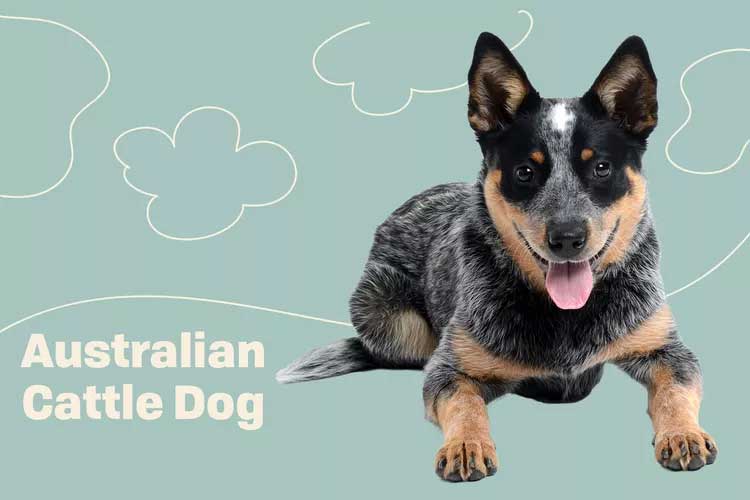
Australian Cattle Dog Overview
| OFFICIAL NAME | Australian Cattle Dog |
| COMMON NAME | Australian Cattle Dog |
| PET HEIGHT | 18 to 20 inches |
| PET WEIGHT | 35 to 50 pounds |
| LIFESPAN | 12 to 16 years |
| GOOD WITH | children, families |
| TEMPERAMENT | aloof, outgoing, playful, willful |
| INTELLIGENCE | high |
| SHEDDING AMOUNT | seasonal |
| EXERCISE NEEDS | high |
| ENERGY LEVEL | active |
| VOCAL LEVEL | when necessary |
| DROOL AMOUNT | low |
| BREED GROUP | herding |
| BREED SIZE | medium (26-60 lbs.) |
| COAT LENGTH | short |
| COLORS | blue, gray, red |
| PATTERNS | flecked / ticked / speckled, merle |
| OTHER TRAITS | cold weather tolerant, easy to groom, easy to train, good hiking companion, highly territorial, high prey drive, hot weather tolerant, strong loyalty tendencies |
Australian cattle dogs, also known as blue heelers, will not only run circles around you, but also herd you down the sidewalk, across the driveway, and into your car. ACDs, as they're also called, know there's work to be done, and their agility, brainpower, and efficiency make them extremely good at it.
Karen Shaw Becker, DVM, author of Real Food for Healthy Pets and co-founder of Dr. Becker's Bites, believes it's essential for animal guardians to make knowledgeable decisions to maximize the healthspan of their animals. "Australian cattle dogs are intelligent working dogs as well as a herding breed, so they need jobs to do daily," she says. "As their guardian, if you don't create positive, engaging, and appropriate work for them, they'll create their own destructive tasks—like dismantling the couch."
ACDs do understand the importance of work-life balance, though. Compact and quick, they'll wow your friends with their prowess at Frisbee, disc golf, or any other outdoor game you want to play, then snuggle up at night for a well-deserved rest.
Appearance
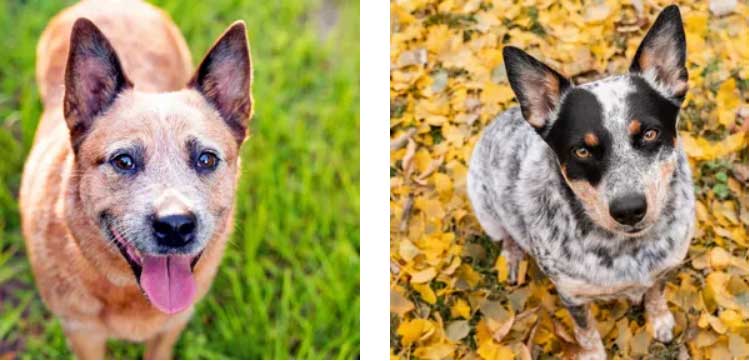
With oval brown eyes that sparkle with attention and raised tapered ears, an Australian cattle dog directs all his attention to you. His intent, curious expression asks, "What's next?" His head is curved and broad, the muzzle is short and sharp, and his slightly bushed tail hangs loosely off his hindquarters.
An ACD's body reflects the lean, coiled energy resting beneath a double coat. While not stocky or brawny, his evenly proportioned, solid frame supports power and endurance, standing about 19 inches tall at the withers, and weighing between 35 and 50 pounds. The outer coat is short and bristly, while the soft under coat provides insulation from temperature extremes.
An Australian cattle dog's colors represent his multicultural heritage, including Dalmatian, collie, and wild Australian dingo lineage. His fur pattern is either mottled or speckled, with shades of white, gray, blue, black, or red, which creates a striking appearance. No two coats are ever quite the same, but one consistent element on many cattle dogs is a contrasting color patch over one or both eyes that differs from the muzzle hue.
Temperament
Some people think putting dogs through obedience training stifles their carefree natures. But all canines require proper positive reinforcement and guidance—especially Australian cattle dogs. They have keen intellects, are exceptional problem-solvers, and take guarding responsibilities seriously. ACDs have a boundless energy and agility, as well as unlimited learning potential.Basic dog training in specific activities such as tracking, obedience, and agility games helps teach him that you're the herd leader asking him to do an important job, and also encourages strong mental and physical health. Try him on a doggie obstacle course filled with bean poles, high jumps, ladders, and tunnels. In 30 seconds, he'll complete it and be ready for more! Some ACDs even learn to put their toys away after playtime.
An Australian cattle dog is loyal, pleasant, and affectionate with you, but might not be as quick to accept strangers: That's when you'll hear his sharp bark most. He's always on alert while doing a territory sweep for anything that might threaten his herd.
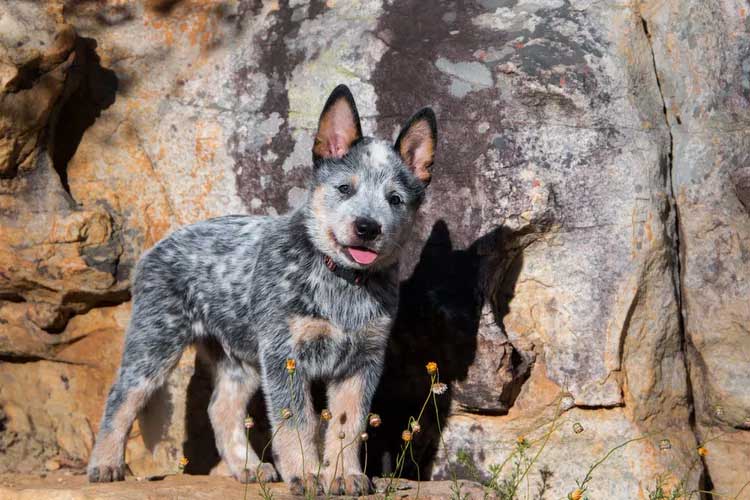
For the best emotional health, Becker says cattle dogs should be socialized early, starting at the breeder. "This behavior should continue through the first year of life to ensure these dogs gain the social skills necessary to appropriately interact with strangers, other animals, and kids for the rest of their lives," Becker says.
Becker also recommends a beginning scent-work class immediately after they graduate from obedience class. "These super-smart dogs excel in this interactive, brain-stimulating game you both can enjoy for a lifetime," she says.
A cattle dog has incredible endurance, and is a sporting person's boon companion. Whether you want to hunt, fish, bike, camp, run, hike, kayak, or skijor—cross-country skiing while pulled by a dog—he's by your side. If you have a farm, he's an exceptional asset to herd many types of livestock.
Australian cattle dogs are, by nature, efficient and dutiful. When he thinks someone is out of line, he'll nip at their heels—this includes you, children, and other dogs. While this behavior is simply instinctual due to his herding inclinations, it's not acceptable in the family. Proper positive conditioning and redirection learned in obedience training will help curtail this habit.
Living Needs
Imagine an Australian cattle dog roaming the wide expanse of the bleak outback. From sunrise to dusk, he's managing his herd, scanning for threats, and following through on any other tasks his owner might have. With this scenario in mind, it's easy to see why he would never be happy in an apartment or waiting hours on end for his humans to come home.If he's not with you on task, reinforce his home environment with high, secure fencing so he can play fetch and other backyard games safely without chasing wildlife or passing cars. Many cattle dog owners tell tales of them springing over a 6-foot high fence with a good running start, especially while leaping for a Frisbee.
Because of their inherent nature to protect the herd, ACDs have high prey drives, so unless they're puppies when they first meet cats and other dogs in the family, there may be issues. Older Australian cattle dogs joining a family usually fare better if they're the only animal at home.
At night, Australian cattle dogs can be outdoors in large pens with runs and secure dens to curl up in, but they'd rather be indoors with you. Then again, if the two of you filled the day with plenty of activity, he might not care too much where he sleeps at night as long as there's assurance that he'll do much of the same with you tomorrow.
Care
An Australian cattle dog isn't one for preening. His thick double coat is conditioned to be short and functional. It's sleek, neat, and without a lot of oils, so a quick weekly groom with a short-bristled brush is all he needs to look his best. He also smells pretty good most of the time, but a bath every other month or so is helpful if he's grungy.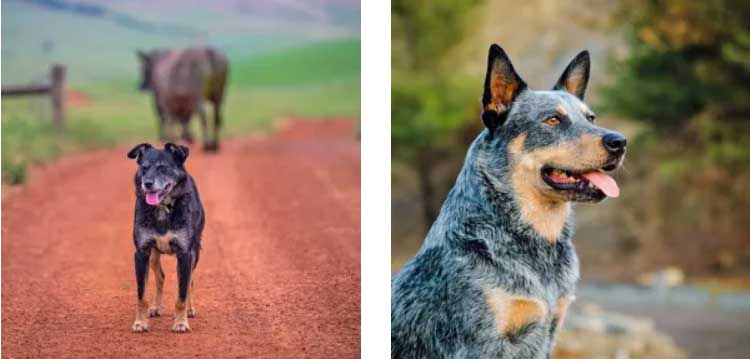
Double-coated dogs "blow their coats" twice a year, which causes a lot of shedding, usually in the spring and fall. The Australian cattle dog's care during this time is no exception: He'll require brushing and combing multiple times a week to remove loose, dead hair.
He'll need regular home dental care for healthy teeth and gums and fresh breath; frequent nail trims, especially as a puppy; and weekly ear inspections for cleaning and ear wax removal.
Health
The Australian Outback is one of the most unpredictable and harsh environments in the world, but the country's cattle dogs were bred to have incredible resilience, and they're able to tolerate both intense heat and freezing cold. Judge their comfort by yours in the same conditions—take care of them as you would yourself, and they should be fine.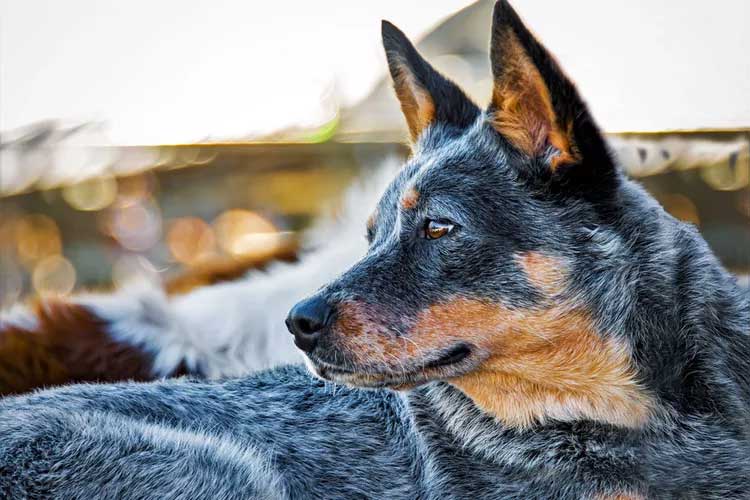
Becker believes biologically-appropriate food and an Australian cattle dog's immediate environment are the most important factors in determining health, vitality, and lifespan. To understand his future, you have to investigate his past.
"In addition to congenital hereditary deafness, Australian cattle dogs who have puppies should be screened for hip, eye and heart problems, as well as patellar luxation, or slipped kneecap," she says. "They're also prone to a heritable eye condition called progressive retinal atrophy. Make sure a puppy's parents have been screened for these diseases. Please don't buy a puppy until you personally review copies of these test results."
Many working dogs like ACDs suffer hip and elbow dysplasia, a degenerative joint condition. Your veterinarian should keep you informed of recommended testing at different stages of life. Preventative measures such as a lean, healthful diet and proper exercise helps him enjoy a long lifespan, usually between 12–16 years.
History
Few breeds have such diverse ancestors as Australian cattle dogs. Stockmen in the country needed reliable canine herders who could handle thousands of animals spread across acres of expansive western grasslands and spent considerable time breeding just the right animal for the job.The first dogs used, British Smithfields, didn't have the ability to tolerate high temperatures and challenging terrain. So throughout the 19th century, breeders mixed Smithfields with the country's native feral breed, dingoes, and later, Scottish Highland collies. Thomas Hall produced Hall's heelers—which is one reason why you sometimes hear ACDs referenced as blue, red, Australian, or Queensland heelers. So Australian cattle dogs and blue heelers are the same animal!
According to the Australian Cattle Dog Club of America, integrated breeding continued when two brothers, Jack and Harry Bagust, decided some Dalmatian traits would help Hall's heelers be more affectionate with humans, and the black-and-tan Kelpie improved their working abilities. Now, as a testament to their Dalmatian ancestry, most Australian cattle dog puppies are born white, and develop their distinctive patterns and colors as they mature. After continued breeding refinements in the 20th century, the American Kennel Club recognized the Australian cattle dog was a pure breed in 1980.
Fun Facts
One of the oldest living canines was an Australian cattle dog named Bluey. Born in 1910, he herded until the ripe old dog age of 20—that's approximately 103 in human years!—but didn't pass away until 29.A common nickname for Australian cattle dogs is "shadow dogs" because of how close they want to stay to their owners. They've been known to stick like velcro to celebrities such as movie stars Matthew McConaughey and Owen Wilson, as well as Mike Wolfe of the TV show "American Pickers."
If you think you've seen Australian cattle dogs with bobbed tails, they're actually what the American Kennel Club classifies as American stumpy tail cattle dogs—cousins, but distinctly different breeds.